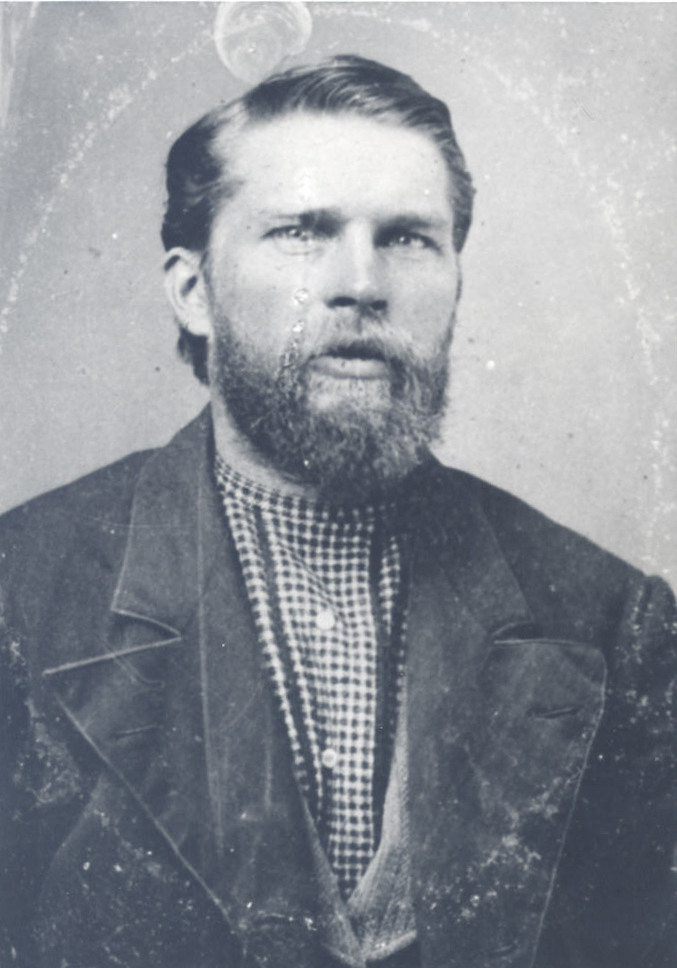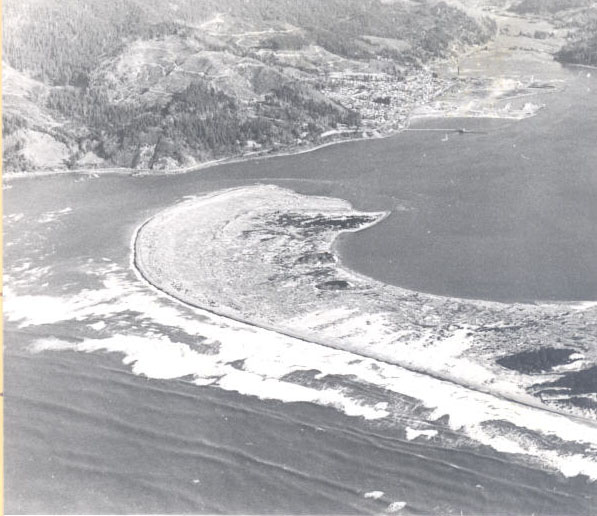Elbridge Trask, born in Massachusetts on July 15, 1815, was a descendant of Osmond Trask, an early settler of the Massachusetts Bay Plantation. Described by a family member as “six feet tall, [with] flowing red hair," Trask traveled to the Pacific Northwest on the brig May Dacre in 1834. He held several jobs, including packing salmon, working on ships, trapping, and hunting. Working his way inland to the Snake River, Jackson’s Hole, and the Yellowstone River, he was a frequent participant in the fur traders’ rendezvous in the Rocky Mountains.
In 1842, he joined the Elijah White wagon train, which was traveling to the Willamette Valley. It was on that trip that Trask fell in love with a young widow from Indiana, Hannah Abell, who had a young daughter named Rosealtha. The wagon train arrived at Oregon City in September 1842, and the couple married in October.
The family took a boat to Astoria and established residence on the Clatsop Plains. Elbridge built Hannah a house near the home of his old trapping companion Solomon Smith. In 1843, Hannah gave birth to twins, Harriet and Martha. The couple had two more daughters and a son while living on the plains.
Trask and three other settlers built the two-masted schooner Pioneer in the spring of 1848. They sailed the vessel with a load of produce from the Clatsop Plains to California, with Robert McEwan as captain. Trask and the others sold the cargo and the ship in San Francisco and returned to the plains via the ship Priest. Their successful trip allowed for an influx of much-needed cash for the settlers on the Clatsop Plains.
When gold fever struck in 1849, many of the men from Astoria left for the California gold fields. Trask had other plans. He wanted to move to the Tillamook Bay area, where he had seen fertile land on previous trips driving cattle from the Willamette Valley.
The Trasks moved to Tillamook in August 1852, the second white family (after the Nathan Dougherty family) to settle in the area. Trask served as one of the three county commissioners when Tillamook County was established in 1853 and later served as justice of the peace. The Trasks’ daughter Endora was the first white child born in the newly established county. Two more boys and one more girl joined the family by 1858.
Because of their standing in the community, the Trasks frequently offered their home as a community meeting place. It also served as the earliest location of the county court for several years. Trask had a good relationship with the Tillamook Indians; but when the Tillamooks became upset with a group of vigilante settlers who had hanged an innocent tribal member, Trask led the settlers in building a fortress, known as Fort Trask, where the white settlers could seek refuge. Trask and Warren Vaughn, another early settler, met with Chief Kilchis and Chief Illga to negotiate an end to the conflicts, but the two groups continued to clash intermittently.
In 1855 near Kilchis Point (the Bay City area), Trask helped build a ship named The Morning Star, which they used to transport goods to and from Astoria. It was the first ship registered in the Oregon Territory.
Trask died in 1863 at the age of forty-nine from an unidentified fever known as “the mountain malady.” He was buried on a hillside on his own claim. The Trask River, which emptied into Tillamook Bay, and Trask Mountain (3,412 feet) in the northern Oregon Coast Range were named after him.
-
![Elbridge Trask, c. 1860s]()
Elbridge Trask, c. 1860s.
Elbridge Trask, c. 1860s Courtesy Oreg. Hist. Soc. Research Lib., neg. no.12712
-
![]()
Tillamook, Oregon, 1907.
Courtesy Oregon Hist. Soc. Research Lib., photo file 1049a
Related Entries
-
![Morning Star (ship)]()
Morning Star (ship)
When commercial traders refused to stop in Tillamook in the mid-ninetee…
-
![Tillamook]()
Tillamook
Tillamook, the county seat of Tillamook County and its largest city, is…
-
![Tillamook Bay]()
Tillamook Bay
Tillamook Bay, which encompasses a 597-square-mile watershed, is the la…
-
![Warren Vaughn (1823-1907)]()
Warren Vaughn (1823-1907)
Born in the town of Barrington in Steuben County, New York, in 1823, Wa…
Map This on the Oregon History WayFinder
The Oregon History Wayfinder is an interactive map that identifies significant places, people, and events in Oregon history.
Further Reading
Vaughn, Warren. Till Broad Daylight: A History of Early Settlement in Oregon's Tillamook County. Wallowa, Ore.: Bear Creek Press, 2004.





